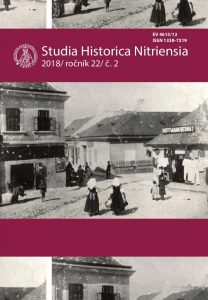Latinské epigrafické pamiatky ako prameň pre štúdium sociálnych dejín Rímskej ríše
Latin Epigraphic Monuments as a Resource for Studying the Social History of the Roman Empire
Author(s): Daniela RoškováSubject(s): Cultural history, Semiotics / Semiology, Customs / Folklore, Social history, Ancient World, Cultural Anthropology / Ethnology, Sociology of Culture
Published by: Univerzita Konštantína Filozofa v Nitre, Filozofická fakulta
Keywords: Epigraphic Evidence; Roman Empire; Gravestones; Burial Traditions; Onomastic Customs; Social History;
Summary/Abstract: The presented paper deals with the question of Latin epigraphic monuments as sources for the study of ancient history. Epigraphic evidence is an excellent source of many aspects of the life of all the social classes of the Roman Empire. In this work we deal mainly with Latin epitaphs from the city of Rome, published in the most famous collections of Latin inscriptions (CIL, ILS, ILS, ILLRP and CLE). Funerary, dedicatory and honorable inscriptions offer opportunity to study the onomastic customs of the Roman society. According to the name on the inscription, we know in many cases the social status of the bearer, determine the family relations of the persons on the inscription, estimate the time horizon of the inscription, thanks to cursus honorum we know everything of the person‘s career. In this work we introduce inscriptions in the Latin original together with own translation, commentary and analysis of individual phenomena. Since most of the inscriptions are epitaphs, we also deal with funerary habits, various burial customs, and traditions common to these inscriptions.
Journal: Studia Historica Nitriensia
- Issue Year: 22/2018
- Issue No: 2
- Page Range: 456-473
- Page Count: 18
- Language: Slovak

